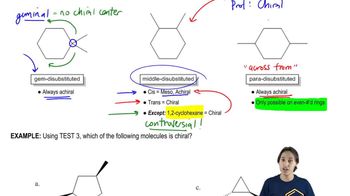a. How many asymmetric centers does the following compound have?
b. How many stereocenters does it have?

 Verified step by step guidance
Verified step by step guidance Verified video answer for a similar problem:
Verified video answer for a similar problem:



 2:15m
2:15mMaster What is a stereocenter? with a bite sized video explanation from Johnny
Start learning